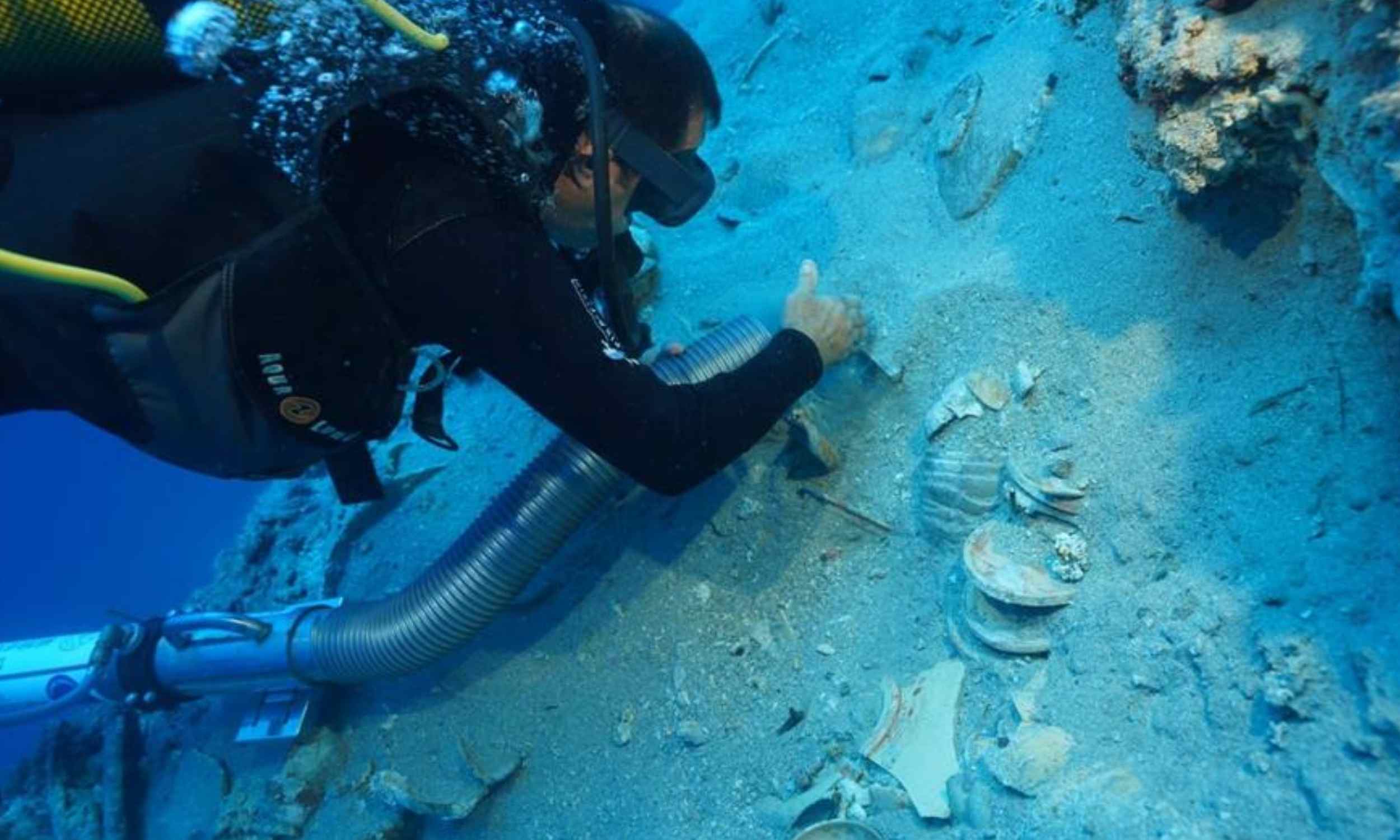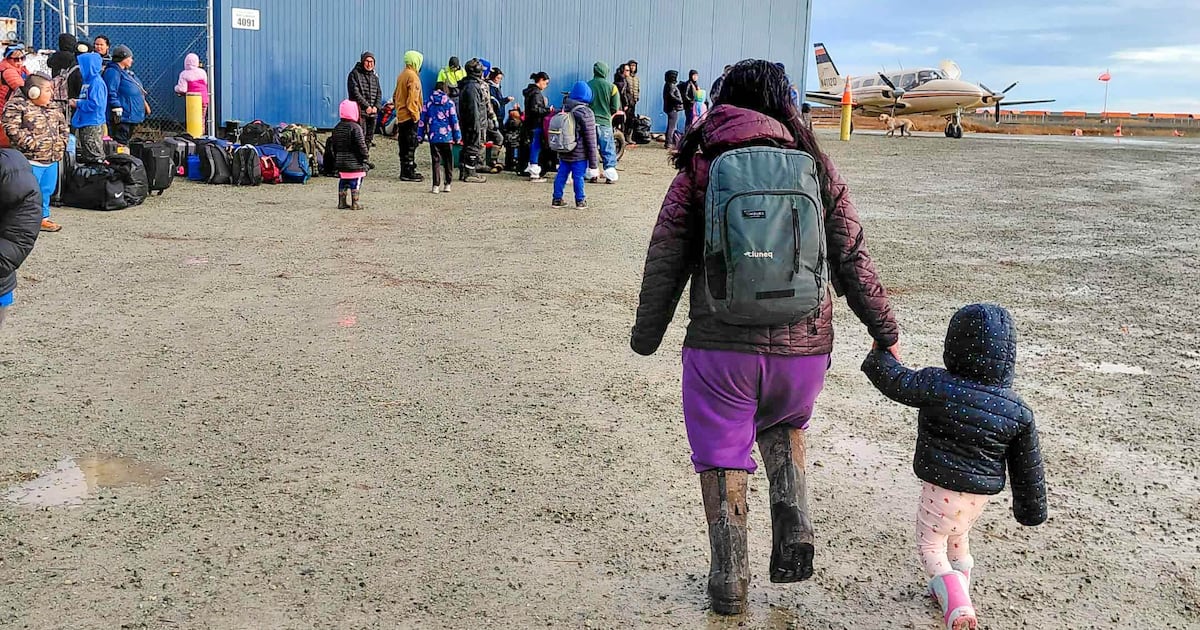Hundreds of people were evacuated from the Western Alaska village of Kipnuk on Wednesday after residents were told to pack a single bag and leave the community, one of the hardest hit by a catastrophic storm that deluged swaths of the Yukon-Kuskokwim region over the weekend.
A similar mass evacuation in Kwigillingok, a Yup’ik village of about 400 residents, was confirmed Wednesday night in a statement by officials with the state’s Emergency Operations Center.
In what officials called “one of the most significant airlift efforts in recent Alaska disaster response history,” the Alaska National Guard and other agencies used helicopters and even a huge C-17 Globemaster III military transport plane to move more than 300 people from their villages to shelters in Bethel and in Anchorage, hundreds of miles away, where a majority of the evacuees will be sent.
Hundreds of displaced residents from Kipnuk and Kwigillingok were being flown from Bethel to an American Red Cross shelter in Anchorage on Wednesday, state emergency officials said. The Alaska Rescue Coordination Center has reported receiving “an overwhelming number of calls for non-critical evacuations,” according to an update Wednesday evening.
The storm left homes uninhabitable and utilities inoperable in communities around the region, displacing more than 1,000 from their homes. Just over 1,300 people were sheltering in schools in eight communities as of Tuesday evening, according to an Alaska State Emergency Operations Center situation report.
Kipnuk, a Yup’ik community of about 700 near the Bering Sea coast, suffered the most extreme storm damage along with Kwigillingok, located at the mouth of the Kuskokwim River.
The storm has claimed at least one life and left two people missing, all in Kwigillingok. Alaska State Troopers said three family members were last seen in a house that broke loose and floated toward the Bering Sea amid record tidal surges.
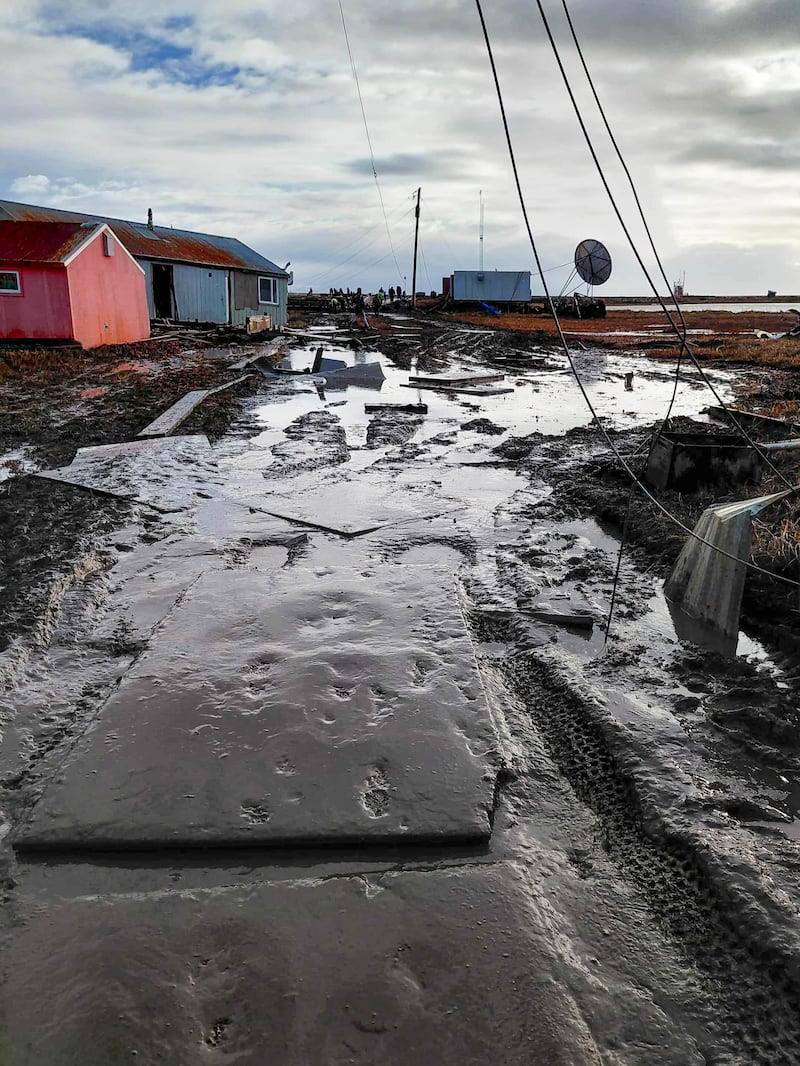
The body of 67-year-old Ella Mae Kashatok was recovered Monday. Still missing are Vernon Pavil, 71, and Chester Kashatok, 41. The search for their floating house covered roughly 88 square miles, emergency officials say.
Troopers on Tuesday said the active search by military aircraft for the men had been suspended. On Wednesday, the Association of Village Council Presidents said village public safety officers, volunteers and others “remain actively engaged in the ongoing recovery effort” using drag bars, sonar equipment and coordinated efforts.
In Kipnuk as many as 600 residents spent several nights at a shelter in the local school. The shelter’s occupants were told Wednesday they must leave, according to several village residents.
The state has not issued any mandatory evacuation orders, said Jeremy Zidek, a spokesperson for the Alaska Division of Homeland Security and Emergency Management.
However, Kipnuk and Kwigillingok “have asked the state and the Alaska National Guard to support a full evacuation of both communities,” Zidek said Wednesday.
At least some evacuees are going to Anchorage: The University of Alaska Anchorage will shelter 300 displaced residents in the Alaska Airlines Center arena on campus, according to the American Red Cross. Displaced residents will get beds, food, emergency relief supplies, emotional support, and health services.
People were expected to arrive in Anchorage on Wednesday evening, according to Katie Bender, director of marketing and communications at UAA. She said it is still unclear how many residents will arrive, or which villages they have evacuated from.
As of Tuesday evening, hundreds of people were sheltering in schools across numerous villages, including 400 people in Kwigillingok, 50 in Napakiak, 109 in Nightmute, 70 in Tuntutuliak, 50 in Chefornak and 30 in Nunam Iqua, according to the state’s situation report issued Wednesday.
[Here’s how to help those affected and displaced by Western Alaska storms]
The storm damaged nearly all homes in Kipnuk, located 98 miles southwest of Bethel. Conditions were deteriorating at the school, where 600 people sheltered last night, according to the emergency operations center report.
The community had asked for more water and “assistance with a failing school generator,” the report said. The National Weather Service was also predicting another, albeit weaker, storm would move over the region by late Wednesday night.
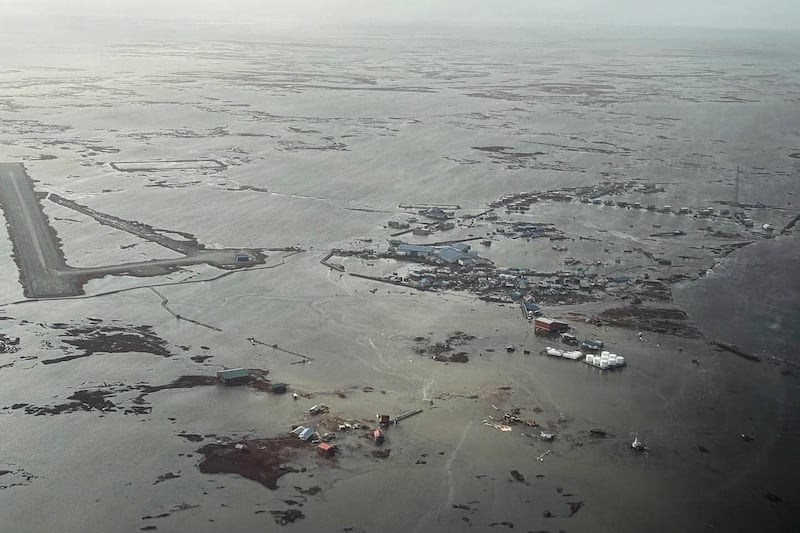
On Wednesday, officials visited the remaining residents at the school to announce a mandatory evacuation, according to videos posted online by Buggy Carl, a Kipnuk resident and emergency response official.
People are hurting, he tells people watching the video, one of several he’s made to film updates of the on-the-ground situation in the community.
“So many tears. Just crying their eyes out. I understand their pain and frustration, but this is for their own safety,” Carl says to the camera.
Jacqui Lang, a teacher at the Chief Paul Memorial School in Kipnuk, said many residents don’t want to go. All have been told they have to leave their pets and almost all belongings behind.
Evacuation “is no longer optional,” she said. “They’re saying that the school is not safe.”
People were being flown out on large Black Hawk helicopters as well as smaller private planes, Lang said.
On Wednesday, she was trying to coordinate with a Bethel pet rescue to get the animals still in the village out, putting on duct-tape collars with owner information to help owners find animals if an airlift can be arranged.
Bethel Friends of Canines in a post Wednesday said they are coordinating with teachers in Kipnuk to get pets with an otherwise uncertain future out of the village and on to Bethel. The group said people are helping in “creative ways” including private pilots transporting animals out, and a few dogs leaving by boat to nearby villages such as Chefornak “where regularly scheduled flights can get to Bethel and beyond much faster.”
State officials in an update Wednesday evening said that, while evacuation of people was the priority, there were efforts underway to coordinate rescues for stranded and displaced animals.
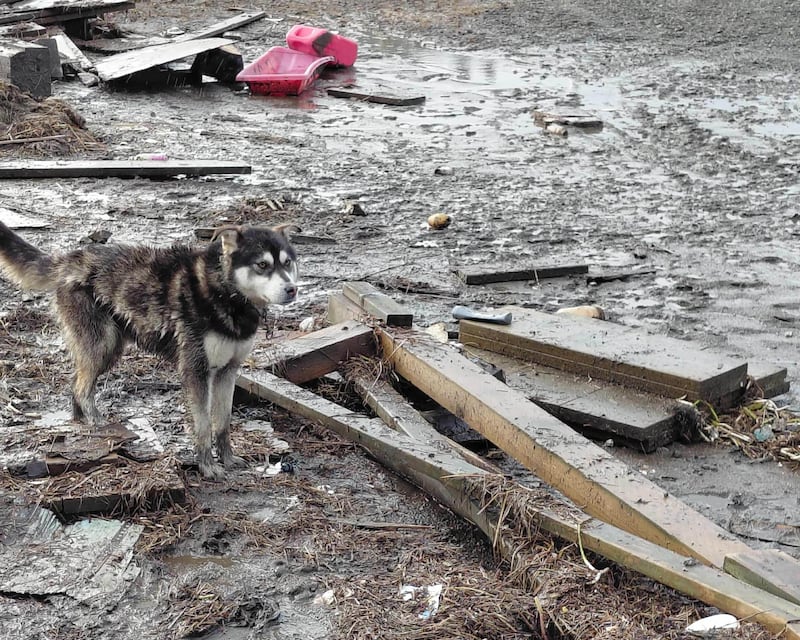
“People are devastated,” Lang said. “They don’t want to leave.”
Most of the people being flown out of the remote villages, accessible only by air, are headed first for the regional hub of Bethel, where an armory building is set up to house around 100 evacuees, and where donations have been piling up. Other evacuees have said they want to join family members in neighboring, less-damaged communities in the region, Lang said.
As of Wednesday night, “sheltering operations have expanded beyond the regional hub of Bethel, where capacity is reaching its limit,” state emergency management officials said in a statement. “Hundreds of survivors are being relocated to safe, warm shelters outside the region in coordination with local communities, tribal organizations, the Yukon-Kuskokwim Health Corporation, and the Association of Village Council Presidents.”
The goal, Zidek said, is also to get less-damaged homes livable before winter sets in.
“We’re going to look to do that in every community that we can, to get people back into their homes,” he said. “We’re preparing to provide intermediate and long term shelter to folks that cannot return to their home in the short term.”
The American Red Cross has brought additional staff from around the nation to help in Anchorage and Bethel to assist with sheltering and other mass care needs, according to state emergency officials. The World Central Kitchen has arrived and is coordinating feeding of the survivors in shelters, they said. The Salvation Army is supporting mass care and working to coordinate donations and sheltering needs.
Officials at the state emergency operations center said they have received mutual aid from other states, including Colorado, Virginia, South Carolina, Texas and Arkansas.
Daily News reporter Bella Biondini contributed to this report.
First Appeared on
Source link





